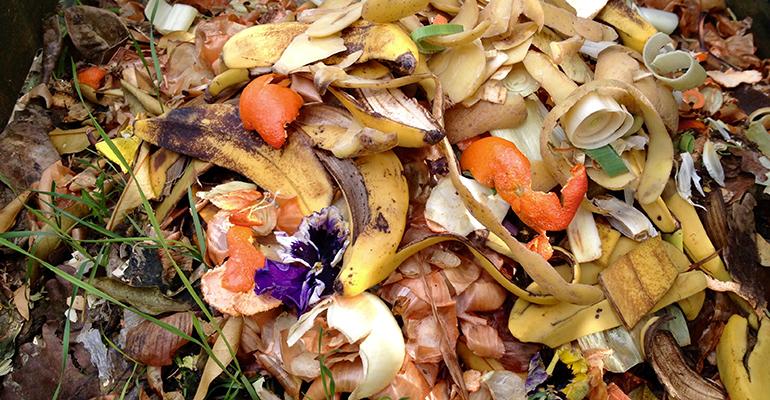Harvard Law School’s Food Law and Policy Clinic and the Natural Resources Defense Council estimate that up to 40% of all food produced in the United States is lost or wasted every year. Meanwhile, Feeding America estimates that one out of every eight Americans, or more than 40 million people, is food-insecure (almost 13 million of whom are children). According to the Food and Agriculture Organization, each year consumers in wealthy countries allow almost as much food to go to waste (222 million tons) as the entire net food production of sub-Saharan Africa (230 million tons).
While these statistics could make the most optimistic among us waver, there is cause for encouragement among the data.
Wednesday, April 24, is Stop Food Waste Day. Described as “a day of action and awareness to focus attention on the global epidemic of food waste and the solutions to combat the problem,” the goal behind this awareness campaign is to make individuals and businesses alike aware of their surplus food by not wasting anything for an entire day. This means everything from making a grocery list and taking it to the supermarket so you’re not tempted to pick something up that you don’t have a plan for, to making sure you chop up and serve every inch of a vegetable, to, of course, finishing everything on your plate.
Source reduction must come first
The greatest challenge and opportunity for food waste is source reduction. While composting is important — we’ll get into more details on this — when your business reduces the volume of food it produces or purchases in the first place, composting gets that much easier. This has the additional benefit of saving your business money.
The Food Recovery Hierarchy, developed by the Environmental Protection Agency (EPA), is designed as an inverted pyramid that clearly prioritizes the different actions that a business or individual can take to ensure that they prevent and, when not preventable, convert, wasted food to its highest possible use.
 With each tier of the Food Recovery Hierarchy focusing on a different strategy for managing food waste, this top-down approach shows that the highest tier in the food recovery pyramid is source reduction — the act of reducing the volume of surplus food being generated in the first place.
With each tier of the Food Recovery Hierarchy focusing on a different strategy for managing food waste, this top-down approach shows that the highest tier in the food recovery pyramid is source reduction — the act of reducing the volume of surplus food being generated in the first place.
Food donation and animal feed
The second priority is food donation. Many grocers are generally very good at setting aside baked products and finding partners that can distribute these items to people in need. Donating fresh fruits and vegetables is more complicated, and even more difficult is getting perishable items such as meat, dairy and prepared foods to those who can use them. However, there are organizations that are well equipped to help with these surplus foods.
Animal feed programs and rendering are other examples of higher uses of wasted food. There can be challenges with finding local farmers who can provide reliable pickups, but, again, there are companies that make these programs efficient and manageable.
Organics is more than just food
Of course, organics recycling doesn’t only refer to food waste.
While discarded food takes up a large proportion of the organics recycling category — with this including everything from fruits and vegetables, to meats, poultry, and seafood (including bones and shells), to coffee grounds, egg shells and bakery ingredients — organics includes other organic materials, food-soiled paper, coffee filters and plant material such as leaves and stems.
While organics recycling includes much more than food waste, these programs typically have the same contamination challenges as mixed recycling (paper, plastics, metal and glass). Plus, separating food waste for collection has the added hindrance of being an unfamiliar experience, which holds back many individuals and organizations from trying it for the first time.
Organics recycling opportunities
While this may be a challenge to take up, it also presents an opportunity. Businesses can educate their employees, and themselves, on how to best deal with their wasted food and other organics to ensure they’re being separated correctly. If your waste and recycling partner doesn’t currently offer organics recycling, find out if another company can pick these materials up for you.
Technology can help to improve upon our current organics recycling efforts. For businesses looking to implement organics recycling programs either on a small scale, or across an international footprint, food waste reduction programs can first help you to uncover what you are discarding. With data that shows what is left, donation and organics recycling programs can be designed and implemented that keeps these useful resources out of the landfill.
Stop Food Waste Day is a reminder to all of us that the biggest opportunity in organics recycling, as in all other forms of recycling, is source reduction. The less we produce, the less we need to recycle. After that, we need to put in the work to make sure that we educate our employees, and ourselves, on why putting the food we produce toward a beneficial use is so important.
Ryan Cooper is waste diversion manager and organics recycling lead at Rubicon Global, a technology company that powers a digital marketplace, provides a suite of SaaS products for waste, recycling, and smart city solutions, and collects and analyzes data for businesses and governments worldwide. He can be reached at [email protected].





